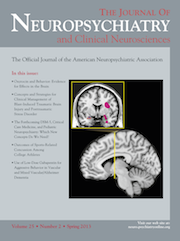Removing Cadmium by Nano-Pore Zeolites to Decrease Aggressive Behavior, Stress, and Hyperactivity
To the Editor: Aggression is known as forceful, attacking, or hostile behavior or disposition that could be associated with provocation. Aggression is classified based on physical or communicational signs as verbal or nonverbal. Aggression can be caused by internal or external factors, such as exposure to cadmium (Cd).1
Cd is a heavy metal that exists in trace amount in the blood. Its excess amounts may damage some tissues, one of which is the nervous system. Some research shows that Cd may decrease attention during studying. Environmental pollutions and tobacco-smoking may cause Cd toxicity. Cd is a toxic metal that can diffuse into the brain, cross the blood–brain barrier, and impair neuronal performance.2 In one study, the embryotoxic and long-term effects of Cd exposure in rats were analyzed. This study showed that high levels of Cd cause motor hyperactivity, aggressive activities, and anxiety-like behavior.3 Another study showed that Cd is associated with behavioral impairment and that decreasing Cd decreases the aggressive behavior and stress.
On the other hand, zeolites are crystalline material with n-membered ring (e.g., 4, 5, and 6)-pore in a three-dimensional framework. Synthetic and natural zeolites consist of many pores in nanometer dimensions. Zeolites are applied for adsorption of heavy metals in different in-vitro and in-vivo studies. In a study, Zn (II) heavy metal was adsorbed in aqueous solution by synthetic zeolite. Researchers showed that the performance of zeolites is effective for removing poisons in humans.4 In one study, the zeolites interacted with human bile. Also, natural zeolites are used to remove heavy metals such as Cd, Zn, and Cu from aqueous solutions.5
Based on abovementioned points, we hypothesize that the nano-pore zeolites can be used to trap the Cd trace metal in high-level Cd poisoning. The nano-pore zeolites have no toxicity and can be excreted from the body by urinary and digestive tracts. Cd will be trapped by a nano-pore network of zeolites and will be removed from the body. Also, the crystal size of zeolites is in the micro-meter range, which prevents them from crossing the blood–brain barrier. Surely, clinical data must be collected to support this idea.
1 : Social Psychology, 7th Edition. Upper Saddle River, NJ, Prentice Hall, 2010Google Scholar
2 : Cadmium neurotoxicity. Environ Toxicol Pharmacol 2007; 23:350–358Crossref, Medline, Google Scholar
3 : Cadmium and exposure to stress increase aggressive behavior. Environ Toxicol Pharmacol 2011; 32:40–45Crossref, Medline, Google Scholar
4 : Zeolites in Industrial Separation and Catalysis Wiley-VCH, 2010, pp 6–7Crossref, Google Scholar
5 : [In vitro study of vitamins B1, B2, and B6 adsorption on zeolite]. Vojnosanit Pregl 2011; 68:15–20Crossref, Medline, Google Scholar



